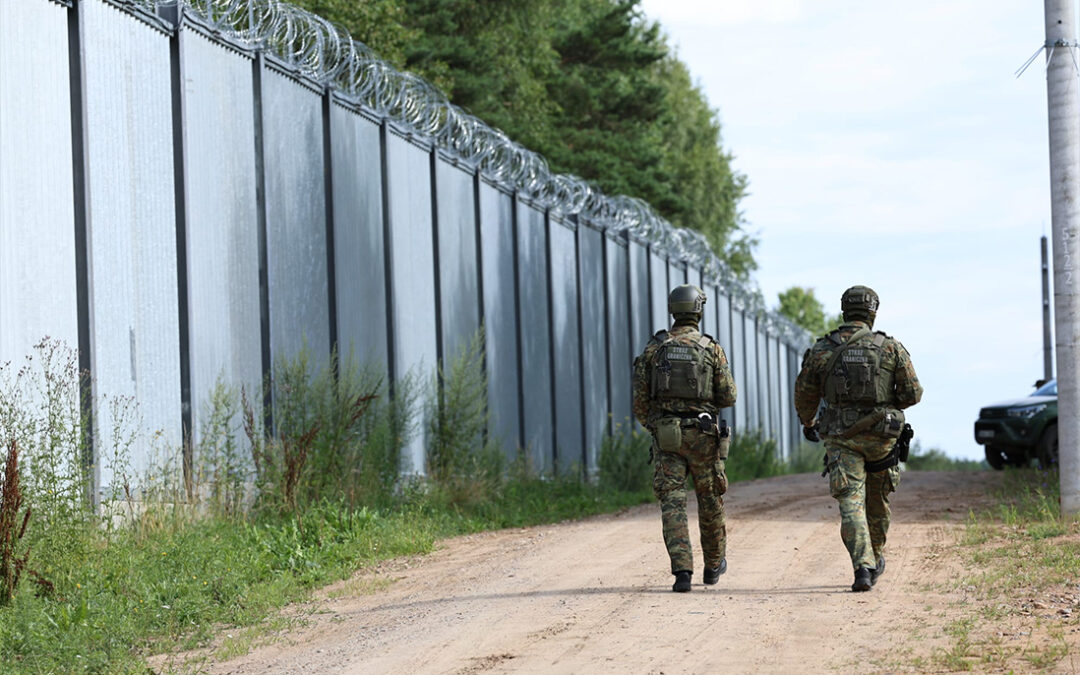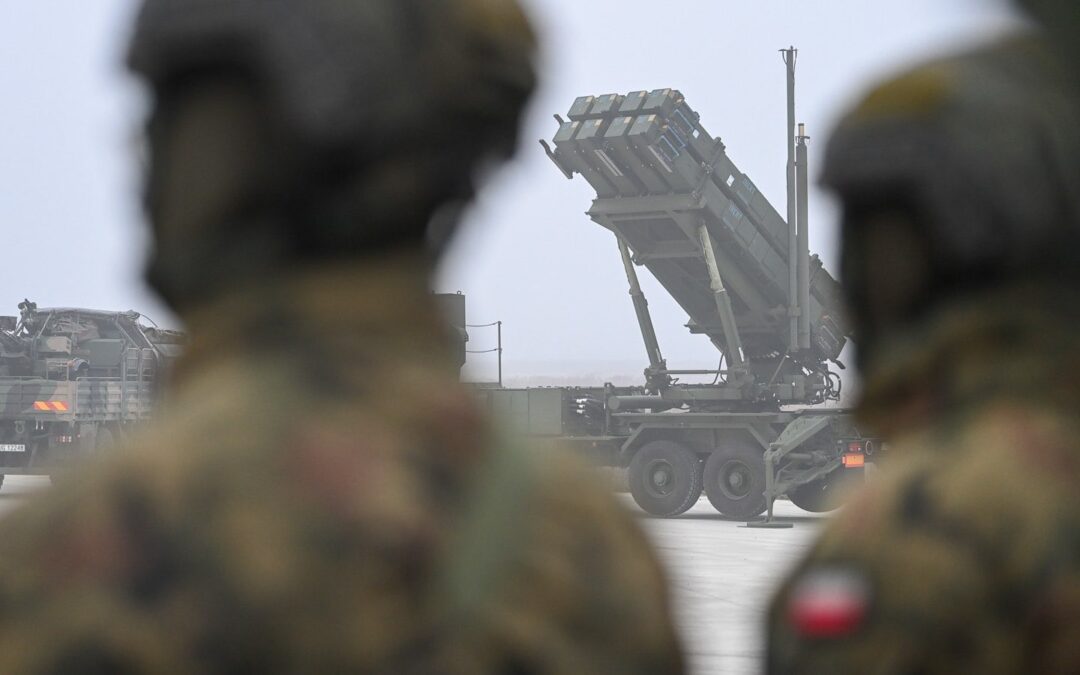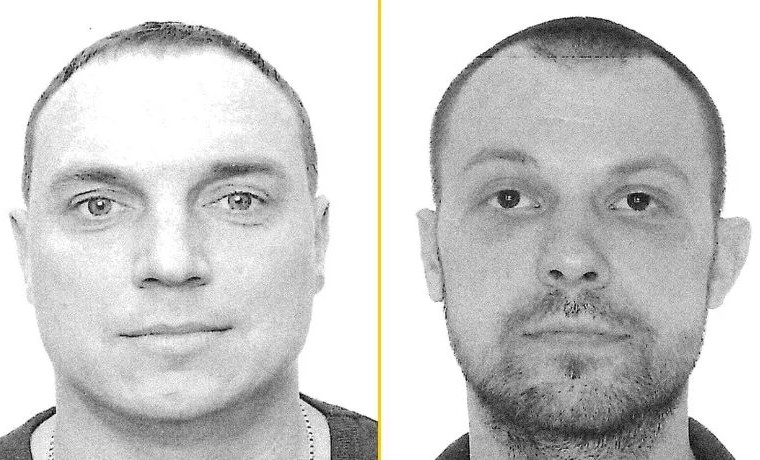The number of attempts to illegally cross from Belarus fell by more than half in the three weeks following Poland’s introduction of an exclusion zone at the border.
The measures, which went into force on 13 June, ban unauthorised people from entering within 200 metres of the Polish side of the border in some places and up to two kilometres in others. This was intended to ease the work of officers on the border and to hinder the operations of people smugglers.
Poland’s border guard says that, in the three weeks after the exclusion zone was introduced, it recorded 1,700 attempted illegal crossings. That was down from 3,900 in the three previous weeks, a decline of around 56%.
💬 Rzeczniczka Podlaskiego Oddziału @Straz_Graniczna mjr Katarzyna Zdanowicz o funkcjonowaniu strefy buforowej ⤵️
Minęły trzy tygodnie funkcjonowania strefy buforowej i widać jej efekty. Widać spadek liczby prób nielegalnego przekraczania granicy. Takich prób w trakcie jej… pic.twitter.com/dgmrcm9V4j
— MSWiA 🇵🇱 (@MSWiA_GOV_PL) July 5, 2024
Border guard spokeswoman Katarzyna Zdanowicz said that, in the first days after the exclusion zone was established, they recorded around 150 attempted crossings per day but that has since fallen to around 20 per day.
Zdanowicz also noted a significant fall in the number of people being detained on the Polish side of the border owing to their involvement in collecting and transporting migrants.
“Before the zone was introduced, we apprehended such an organiser every day. However, since the introduction of the zone, we have apprehended 14 such persons [in total],” she said, quoted by news website Interia.
The spokeswoman also noted that 68 permits had been issued so far allowing people to enter the zone, 51 of them for people working in the media.
Sorry to interrupt your reading. The article continues below.

Notes from Poland is run by a small editorial team and published by an independent, non-profit foundation that is funded through donations from our readers. We cannot do what we do without your support.
The measures were put in place last month following a surge this year in the number of people attempting to cross the border, as well as an increase in aggression towards Polish officers there. In one case, a Polish soldier died after being stabbed while stopping a group of migrants from crossing.
However, Poland’s human rights commissioner criticised the exclusion zone, saying it would “interfere with basic constitutional freedoms”, including the right to information and freedom of movement, and “impede the provision of humanitarian, medical and legal assistance” to those crossing the border.
Zdanowicz noted that Poland will also continue to reinforce the barrier built on the Belarus border by the previous Law and Justice (PiS) government.
The electronic elements of the barrier, for example, are to be enhanced with additional security cameras and lighting. The improvements – which will cost around 125 million zloty (€29 million) – are expected to be introduced by the end of October this year.
Recent months have seen a surge in attempted crossings over Poland's border with Belarus as well as violence by migrants towards Polish officers.
Security expert @MPiekarski24 explains why the situation has changed and how the government is addressing it https://t.co/tYNT5eL9SZ
— Notes from Poland 🇵🇱 (@notesfrompoland) June 12, 2024
The crisis at the border started in 2021, when tens of thousands of migrants and asylum seekers – mostly from the Middle East, Asia and Africa – began attempting to cross with the encouragement and help of the Belarusian authorities.
In May, Polish Prime Minister Donald Tusk noted that now, “unlike at the beginning of these tensions”, the crisis is being orchestrated by Russia. He claimed that 90% of those attempting to cross hold Russian visas.
“We have no doubts, these are facts gathered also by our services: it is the Russian state that is behind the organisation of the recruitment, transport and later attempts to smuggle thousands of people,” said Tusk at the time.
Since the beginning of the crisis, the Polish and EU authorities have described it as part of “hybrid” operations by Belarus and Russia designed to destabilise Poland and the EU.
Amid a worsening crisis at the Belarus border, Polish foreign minister @sikorskiradek says that, as a former refugee, he sympathises with migrants
But he adds that Poland must defend its border from Russia and Belarus' use of migrants in a "hybrid attack" https://t.co/0py17HBI1j
— Notes from Poland 🇵🇱 (@notesfrompoland) June 4, 2024
Main image credit: MSWiA (under CC BY-NC-ND 3.0 PL)

Alicja Ptak is deputy editor-in-chief of Notes from Poland and a multimedia journalist. She has written for Clean Energy Wire and The Times, and she hosts her own podcast, The Warsaw Wire, on Poland’s economy and energy sector. She previously worked for Reuters.



















